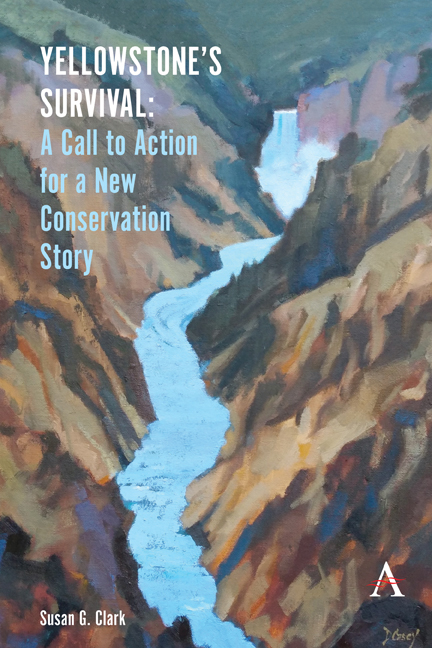 Yellowstone's Survival - A Call to Action for a New Conservation Story
Yellowstone's Survival - A Call to Action for a New Conservation Story Published online by Cambridge University Press: 22 May 2021
The few surveyed stories in the first chapter about the meaningfulness of the Greater Yellowstone Ecosystem (GYE) are only a small sampling. At the heart of each of the stories, perhaps even unknown to authors of those stories, is concern about three basic questions as noted below. The three chapters in Part 1 look at what the physical and biological sciences tell us about Yellowstone. It is important to start with these two levels before moving on to look at the human— our mental level— in Parts 2 and 3. This part grounds the rest of this book.
Please keep the following questions in sharp focus. These are all broad questions. First, what is Yellowstone as nature or as the wild? Do we go to Yellowstone to find and experience nature? More simply, why do we go to Yellowstone?
Second, what do you bring inside you (e.g., expectations), as one who experiences Greater Yellowstone? For sure we are each a human with an evolutionary, personal, and cultural history as we each make sense of nature while we experience Yellowstone. This sensemaking for many people may be completely unconscious and subjective. For other people it may be conscious and active.
And third, what is our relationship to nature, the wild, and the plants and animals with which we share the world? What should our relationship be? In the GYE, like almost nowhere else, we can witness, even participate in nature with hundreds of big animals (i.e., bison, elk, wolves, bears) all around us. We also get to experience vast landscapes relatively untouched by humans. This is a rare experience for visitors given our population size and land-use conversion on this planet. What are we to make of the panorama, all the animals, and ecology?
The GYE today is a marvel, but it is riddled with challenges— small and large, short-and long-term, and minor and deeply profound ones— all at the same time. The challenges in the region that we face are time urgent.
To save this book to your Kindle, first ensure no-reply@cambridge.org is added to your Approved Personal Document E-mail List under your Personal Document Settings on the Manage Your Content and Devices page of your Amazon account. Then enter the ‘name’ part of your Kindle email address below. Find out more about saving to your Kindle.
Note you can select to save to either the @free.kindle.com or @kindle.com variations. ‘@free.kindle.com’ emails are free but can only be saved to your device when it is connected to wi-fi. ‘@kindle.com’ emails can be delivered even when you are not connected to wi-fi, but note that service fees apply.
Find out more about the Kindle Personal Document Service.
To save content items to your account, please confirm that you agree to abide by our usage policies. If this is the first time you use this feature, you will be asked to authorise Cambridge Core to connect with your account. Find out more about saving content to Dropbox.
To save content items to your account, please confirm that you agree to abide by our usage policies. If this is the first time you use this feature, you will be asked to authorise Cambridge Core to connect with your account. Find out more about saving content to Google Drive.